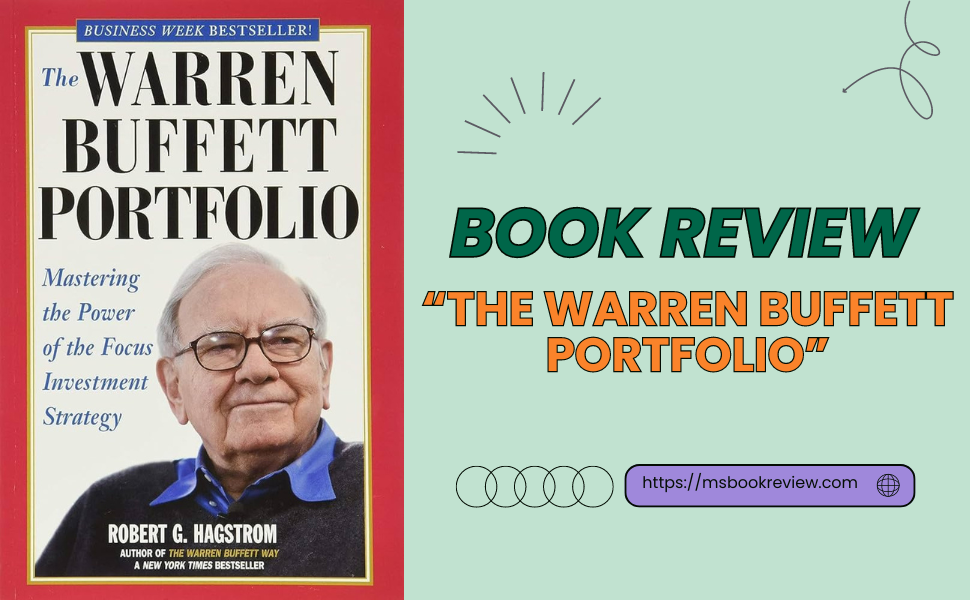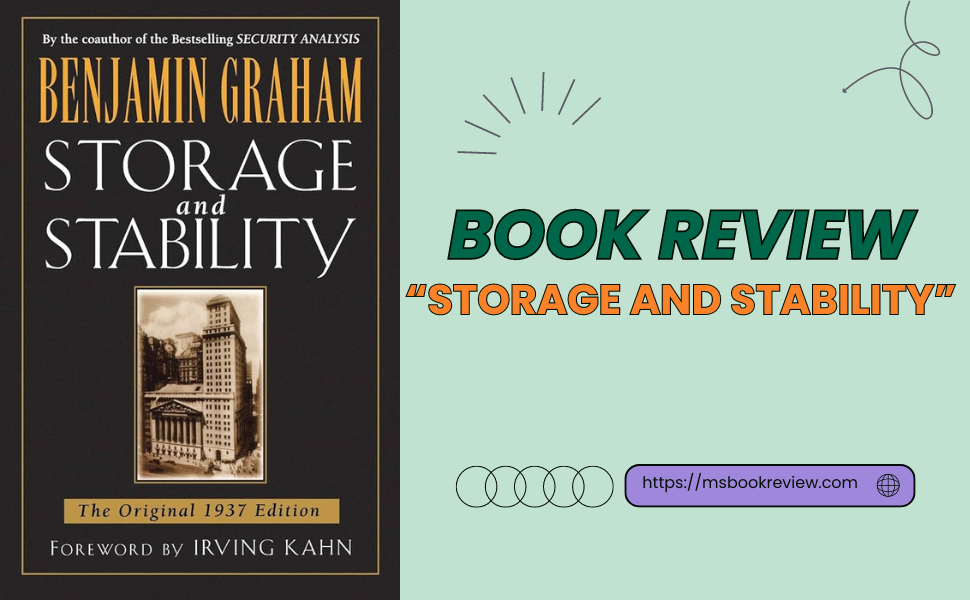Msbookreview.com, in a world where global trade and currency exchange are central to economic Stability, understanding the dynamics of commodities and currency is more crucial than ever.
World Commodities and World Currency by Benjamin Graham offers an in-depth exploration of the relationships between commodities, currencies, and global markets.
This book is not just a study of economics; it’s a comprehensive guide that provides insights into the forces that shape the global economy.
Whether you’re a financial professional, an economist, or simply someone interested in the intricacies of international trade, this book is a must-read.
Table of Contents
ToggleAuthor of World Commodities and World Currency
Benjamin Graham, renowned as the father of value investing, is widely known for his groundbreaking works in financial analysis, such as The Intelligent Investor and Security Analysis.
However, his intellectual pursuits extended beyond investment strategies into broader economic topics. World Commodities and World Currency, first published in 1944, reflects Benjamin Graham’s deep understanding of macroeconomics and his ability to apply rigorous analytical methods to complex global issues.
Benjamin Graham’s experience in both academia and the financial markets gives him a unique perspective on the interplay between commodities and currency, making this book a seminal work in the field of international economics.
Synopsis of World Commodities and World Currency

World Commodities and World Currency explores the intricate relationships between global commodities, currencies, and the economic forces that drive them.
Benjamin Graham presented the idea of a commodity-reserve currency, a concept he believed could stabilize global economies by linking currencies to a basket of commodities.
He argues that such a system would reduce the volatility seen in currency markets and provide a more stable foundation for international trade.
The book is structured around several key themes. Benjamin Graham begins by discussing the historical context of currency systems and their evolution, providing readers with a solid foundation in economic history.
He then introduces the concept of a commodity-reserve currency, explaining how it could be implemented and its potential benefits in reducing inflation and currency devaluation.
Benjamin Graham also delves into the mechanics of commodity markets, discussing how supply and demand dynamics influence prices and how these prices, in turn, impact global currency values.
He examines the role of governments and central banks in managing currencies and commodities, arguing for a more systematic approach to stabilizing global markets.
Throughout the book, Benjamin Graham supports his theories with extensive data and analysis, offering readers a well-rounded understanding of the complex relationships between commodities and currencies.
His arguments are thought-provoking and practical, providing a roadmap for policymakers and economists seeking to create a more stable global financial system.
Advantages of World Commodities and World Currency
One of the significant strengths of World Commodities and World Currency is Benjamin Graham’s ability to blend theory with practical application.
His proposal for a commodity-reserve currency is not just an abstract idea but is backed by detailed analysis and real-world data.
This approach makes the book both intellectually stimulating and practically relevant, offering solutions to some of the most pressing issues in global economics.
Another advantage is the book’s comprehensive coverage of the subject matter. Benjamin Graham meticulously examines the historical, economic, and political factors that influence commodities and currencies, providing readers with a deep understanding of the forces at play in global markets.
His analysis is thorough yet accessible, making the book suitable for experts and those new to the field.
The book also stands out for its relevance to contemporary issues. Although it was written in the mid-20th century, the themes and ideas presented by Benjamin Graham still apply today.
In an era of global economic uncertainty, the concept of a commodity-reserve currency offers an intriguing alternative to the current fiat currency system, and Benjamin Graham’s insights into the relationship between commodities and currency remain highly relevant.
Disadvantages of World Commodities and World Currency
While World Commodities and World Currency is groundbreaking, it has limitations. One potential drawback is the book’s technical complexity.
Benjamin Graham delves deeply into economic theory and uses a significant amount of data to support his arguments, which can overwhelm readers who need to be better versed in economics. Those with a background in the field may need help understanding some sections.
Another area for improvement is the book’s focus on the concept of a commodity-reserve currency, which, while innovative, may be viewed as overly idealistic by some readers.
Implementing such a system would require significant international cooperation and a restructuring of the global financial system, which may be seen as impractical given today’s political and economic realities.
Additionally, the book’s age means some of Benjamin Graham’s data and examples must be updated. While the core principles remain relevant, readers may need to supplement the book with more recent resources to understand current global economic conditions.
Personal Opinion about World Commodities and World Currency
As someone who read this book, I have a personal opinion about it. World Commodities and World Currency is an exciting and insightful work.
Benjamin Graham’s exploration of the relationships between commodities and currencies is comprehensive and thought-provoking.
While ambitious, his ambitious proposal for a commodity-reserve currency offers a unique perspective on how global economic Stability could be achieved.
What I particularly appreciate about the book is Benjamin Graham’s ability to make complex economic concepts accessible to a broader audience.
While the book is challenging, it is also rewarding for those willing to engage with the material. Benjamin Graham’s rigorous analysis and clear explanations make World Commodities and World Currency an essential read for anyone interested in global economics.
However, I also recognize that the book’s technical depth and focus on a single economic concept may appeal to only some.
Those looking for a more general overview of global economics might find the book’s specific focus limiting.
That said, for readers with a serious interest in the subject, World Commodities and World Currency offers a wealth of knowledge and a fresh perspective on how global financial systems could be reimagined.
Moral Message of World Commodities and World Currency
The moral message of World Commodities and World Currency is centered on the need for Stability and cooperation in global economics.
Benjamin Graham emphasizes that the volatility of currencies and commodities can have far-reaching consequences for economies and individuals alike.
By proposing a commodity-reserve currency, he advocates for a system prioritizing long-term Stability over short-term gains, urging policymakers to consider the broader impacts of their decisions on the global economy.
Benjamin Graham also highlights the importance of innovation in economic thinking. In a world where traditional systems often fail to address the complexities of global markets, World Commodities and World Currency encourages readers to think critically and explore alternative solutions.
The book serves as a reminder that economic Stability is not just a technical issue but a moral imperative that requires thoughtful, informed, and cooperative action.
Conclusion
World Commodities and World Currency by Benjamin Graham is a seminal work that offers profound insights into the intricate relationships between global commodities and currencies.
While the book’s technical depth and focus on a commodity-reserve currency may be challenging for some readers, its comprehensive analysis and innovative ideas make it an essential read for global economics.
As you explore this book’s pages, you’ll better understand the forces that shape the global economy and the potential solutions to the challenges we face.
In an increasingly interconnected world, world commodities and world currency provide a timely and thought-provoking perspective on achieving greater prosperity through carefully managing commodities and currency.
Whether you’re a financial professional, an economist, or simply curious about the global economy, this book offers valuable insights that are as relevant today as they were when it was first published.











